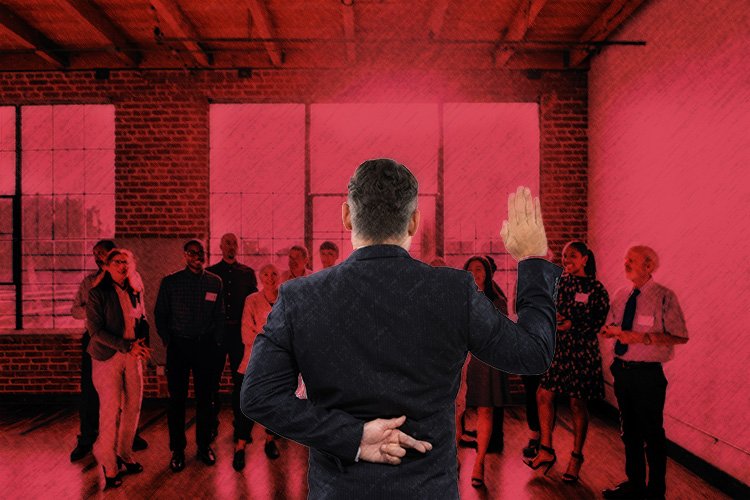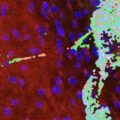Detecting deception in real-world group settings poses a significant challenge, according to a recent study published in Frontiers in Psychology that investigated the complexities of verbal cues in a simulated hiring committee setting.
The research revealed that participants could indirectly discern when someone appeared untruthful. However, detecting overt verbal measures of deception was largely elusive.
These findings shed light on the difficulty of detecting deception in group settings and emphasize the need for improved methods for identifying deception, disinformation, or manipulation in mass communications.
Accurately determining the credibility of someone’s claims is a crucial aspect of high-stakes situations like forensic interviews or interrogations of criminal suspects.
However, conducting such interviews in real-world settings presents challenges due to the absence of experimental control and ground truth. Additionally, science knows surprisingly little about how deception manifests in group settings and whether the results from real-world situations can be applied to forensic contexts.
This lack of scientific understanding of group deception is particularly unsettling in the digital age, where disinformation and manipulation can rapidly spread through social media and the internet, reaching unprecedented speed and reach.
To address this issue, researchers from the University of California, Santa Barbara, and the University of Arizona set up a simulated corporate espionage scenario, hoping to identify verbal signals that differentiate truth from deception in group interviews.
In the study, research participants, acting as a hiring committee, reviewed and discussed the resumes of potential candidates. Unbeknownst to the group, two participants were “organizational spies” tasked with persuading the committee to hire an objectively inferior candidate using deception.
The deceivers were told they were undercover agents working for a rival organization, assigned the dubious task of convincing the group to recruit an unqualified candidate. Victory for the deceivers hinged on their ability to persuade the group to hire one of two least suitable candidates.
In contrast, the naive participants were given explicit instructions that their triumph relied on the group selecting one of two top contenders, considered the most qualified for the job.
The scientist’s goal through the scenario was to answer three specific research questions:
- Are naïve members of a group able to detect deception from those with malicious intent?
- Can linguistic cues of quantity, diversity, complexity, dominance, certainty, and personalism differentiate insiders’ and non-insiders language use to provide verbal cues to deceit?
- Is deception evident from patterns of interaction among group members?
The experiments were held online using video chat using groups of four to five participants, with a trained research assistant overseeing each session.
During each session, participants were asked to rate each other based on their perceptions of trustworthiness after a brief self-introduction. The groups were asked to rate each other again in post-experiment surveys.
Participants’ discussions and interview reports were transcribed and analyzed using SPLICE, an automated text analysis program, to detect deception-related verbal cues.
Finally, researchers conducted a conversational pattern analysis on group discussions to see if differences between successful and unsuccessful deception could be detected.
Following multiple trials, deceivers successfully convinced naive participants to select one of the least qualified candidates in half of the group sessions.
Examining participants’ trustworthiness ratings, researchers found no difference in how naive participants perceived deceivers following initial introductions.
However, in 50% of the sessions where a group selected one of the best candidates, deceivers’ trustworthiness scores took a significant dip in post-experiment surveys, revealing that naive participants could discern deception and indirectly detect the spies.
In contrast, in the sessions where one of the least qualified candidates was selected, naive participants failed to perceive the deceivers as untrustworthy in post-experiment surveys.
“As the awareness of deception affects decision making, a comparison of trustworthiness that accounts for the deception outcome may further reveal in which circumstances the naïve participants performed better at detecting deception,” researchers wrote.
“The results show that in only half of the groups, suspicion was triggered and affected decision making.”
Examining linguistic cues and conversational patterns, researchers found that deceivers used more complex language and employed an “echoing” strategy by repeating others’ opinions, creating collusion naturally without pre-planning.
Alarmingly, no other verbal differences were observed, suggesting that the distinction between deceivers and truth-tellers is subtle and challenging to detect.
The findings underscore group dynamics’ vital role in shaping deceptive behavior and affecting detection accuracy.
Successful deception often involved spies echoing others’ opinions instead of being the first ones to propose a different view. This “echoing effect” was particularly effective when the spies collaborated and reflected on each other’s deceptive opinions.
“Deception is very difficult to detect but easy to perpetrate, especially in a group where personnel may be colluding,” researchers wrote. “In general, groups afford deceivers more latitude in which to operate. They may mimic or echo others’ behavior patterns. They may choose to be more silent, passive members of the group—the so-called ‘hiding in the weeds’ strategy—while being vigilant about others’ reactions.”
Other aspects of group settings may foster covert actions, making it harder to detect deception, such as the natural tendency for people to form coalitions and cliques.
Seating arrangements between group members can also affect conversational dynamics. Studies have shown that people in groups tend to primarily interact with those directly opposite of them, in a phenomenon known as the “Steinzor effect.”
Finally, research has shown that group settings can be more cognitively demanding, making it more challenging to watch and listen for non-verbal signals of deception from multiple members.
Researchers say future investigations should explore non-verbal communication and content-based verbal patterns to better understand deception detection in group settings.
Deception is an intricate aspect of human communication, and this recent study provides valuable insights into its manifestation during group deliberations.
Study authors hope their findings will contribute to understanding how individuals navigate conflicting goals and ulterior motives in real-world group settings.
Tim McMillan is a retired law enforcement executive, investigative reporter and co-founder of The Debrief. His writing typically focuses on defense, national security, the Intelligence Community and topics related to psychology. You can follow Tim on Twitter: @LtTimMcMillan. Tim can be reached by email: tim@thedebrief.org or through encrypted email: LtTimMcMillan@protonmail.com

